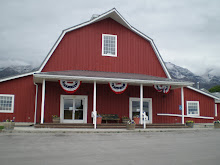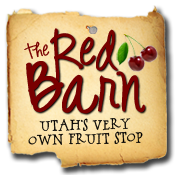Nine Common Mistakes
- Using undersized containers
- Using undersized plants
- Plants and container are out of proportion
- Over or under watering
- Incompatible plants in the same container (full sun vs. part shade, etc.)
- Forgetting to fertilize
- Neglecting to cut back, prune, deadhead, or trim
- Hanging on to sickly or poorly performing plant
- Assembling a large container before it's in its final place
 I also learned that you should not use regular garden soil from the ground (opps!). You must use potting soil in order for your plants to get enough oxygen. If making a flower container, try arranging the flowers while still in their container before planting so it's easier to rearrange until you find something you like. For the most aesthetically pleasing arrangements you will want to pick a "Spiller, Filler, and Thriller". A spiller, or hanging flower will soften the edges of the container, while fillers take up the majority of the basket. Thrillers provide a stunning draw to the container, as they are usually the focal point that adds height and dimension to the basket. (Note, if you are making a hanging basket, you don't need a thriller since the hanger itself gives it the height it needs). Adding soil moisture crystals and fertilizer to your basket maximizes your basket's producing potential. Make sure to water frequently and completely, making sure to water the soil without getting water on the foliage if possible. Containers should have some water run out of the bottom, and need to be able to drain completely. If your container does not have holes in the bottom for drainage, drill your own! Also remember to break the root balls of the plants before planting.
I also learned that you should not use regular garden soil from the ground (opps!). You must use potting soil in order for your plants to get enough oxygen. If making a flower container, try arranging the flowers while still in their container before planting so it's easier to rearrange until you find something you like. For the most aesthetically pleasing arrangements you will want to pick a "Spiller, Filler, and Thriller". A spiller, or hanging flower will soften the edges of the container, while fillers take up the majority of the basket. Thrillers provide a stunning draw to the container, as they are usually the focal point that adds height and dimension to the basket. (Note, if you are making a hanging basket, you don't need a thriller since the hanger itself gives it the height it needs). Adding soil moisture crystals and fertilizer to your basket maximizes your basket's producing potential. Make sure to water frequently and completely, making sure to water the soil without getting water on the foliage if possible. Containers should have some water run out of the bottom, and need to be able to drain completely. If your container does not have holes in the bottom for drainage, drill your own! Also remember to break the root balls of the plants before planting.

 Adrian also provided ample information about warm season gardening. He informed us of the best varieties of vegetables for our area, as well as information about watering, planting, fertilizing, and controlling pests. To learn more information about when to plant, or how to control pest, please visit http://climate.usurf.usu.edu or utahpests.usu.edu/ipm.
Adrian also provided ample information about warm season gardening. He informed us of the best varieties of vegetables for our area, as well as information about watering, planting, fertilizing, and controlling pests. To learn more information about when to plant, or how to control pest, please visit http://climate.usurf.usu.edu or utahpests.usu.edu/ipm. A special thanks to USU, Meredith, and Adrian for the wonderful classes and for providing tomato plants and demonstrations for those in attendance.
A special thanks to USU, Meredith, and Adrian for the wonderful classes and for providing tomato plants and demonstrations for those in attendance.















No comments:
Post a Comment